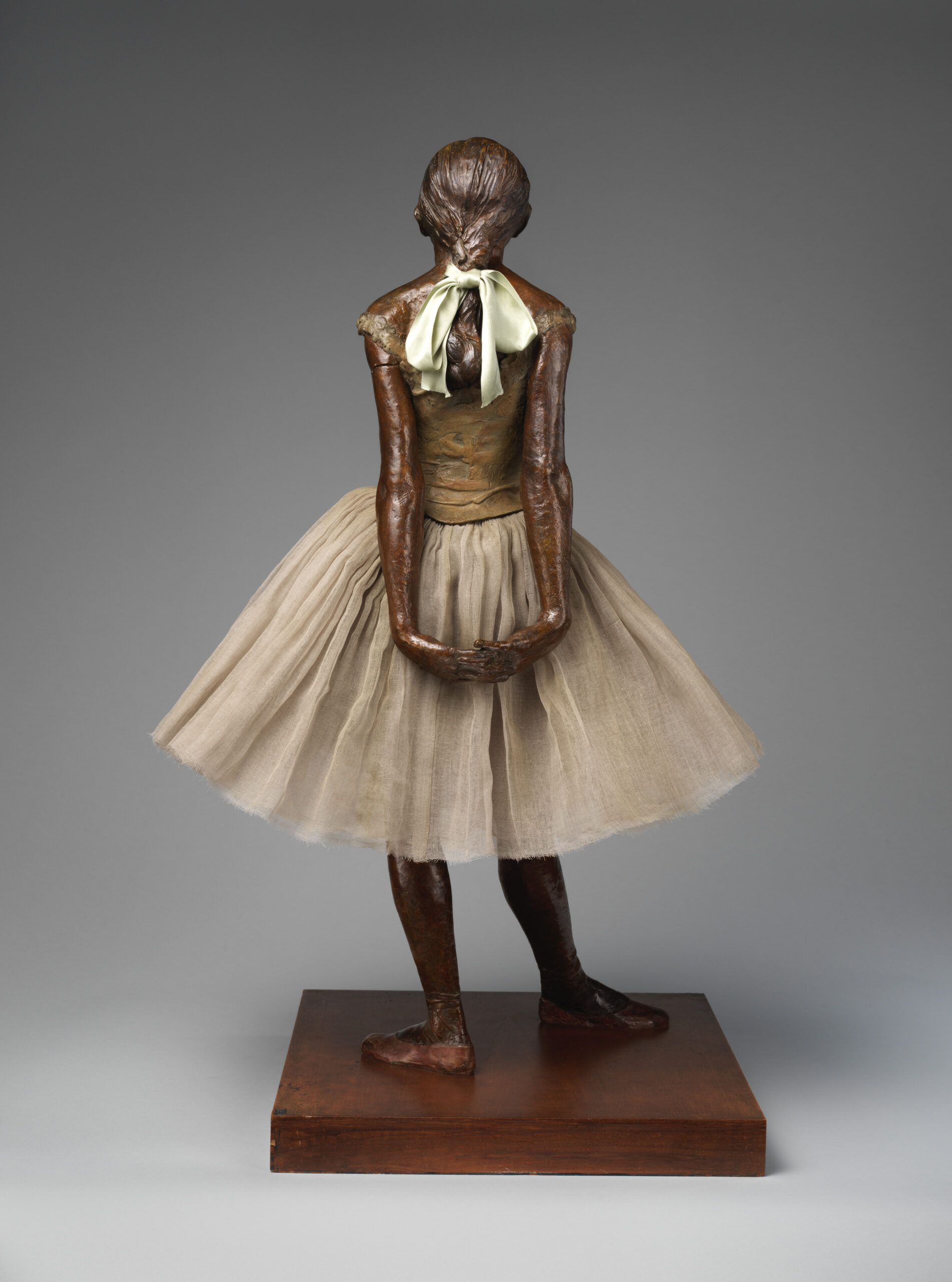As an art lover and someone constantly exploring new creative experiences, I’ve had the privilege of encountering some of the world’s most iconic masterpieces. However, one piece in particular stands out—Edgar Degas’ Little Ballet Dancer. This sculpture has fascinated me not only for its historical significance but also for its controversial place in the art world. Its journey through my life has been as transformative as the figure itself, a journey that began in the streets of Paris and came full circle in Pasadena, California.
The Controversy Surrounding Edgar Degas’ Little Ballet Dancer
Edgar Degas, one of the most celebrated Impressionist artists, was known for his meticulous study of movement and his captivating depictions of dancers. However, his Little Ballet Dancer has often sparked debate and discussion in the art world. Originally created in 1880, the sculpture is a lifelike representation of a young ballet dancer, presented in an almost startling realism. Its realism—an unusual feature for the time—combined with the use of mixed media (wax, fabric, and a tutu) led to reactions of both awe and discomfort.
Some viewed the piece as a raw, unidealized portrayal of youth and vulnerability, while others, at the time, saw it as a scandalous representation of the dancer’s body, one that veered too far from the traditional, graceful ideals of the time. The depiction of the dancer, not as an ethereal figure but as a real, somewhat unpolished young girl, raised questions about the role of women in the arts and the pressure on dancers, often young and overworked, to conform to society’s beauty standards.
A Full Circle Moment: From Paris to Pasadena
I first encountered Degas’ Little Ballet Dancer in the Musée d’Orsay in Paris, a city known for its deep connection to art, culture, and history. Standing before the sculpture, I was taken aback by its presence. There she stood, captured in a moment of grace and vulnerability, yet there was something so human about her. In that moment, the sculpture felt more like a living being than an inanimate object, evoking emotions I couldn’t fully explain.
Fast forward a few years to Pasadena, California. After having graduated, I found myself at the Norton Simon Museum, once again face to face with Degas’ Little Ballet Dancer. This time, however, the experience was different. I wasn’t just a visitor admiring art in a foreign land; I was someone who had grown and evolved, having navigated the complexities of my own life. I had stepped into a new chapter, one where I was transitioning from a student to an artist in my own right, as I pursued my creative passions and personal growth.
Seeing the Little Ballet Dancer again, this time in my home country, felt like an emotional full circle moment. What once seemed like just another beautiful piece of art now resonated with me in a deeply personal way. It was more than just a sculpture; it represented growth, transformation, and the beauty of seeing something familiar from different stages in life. This time, it wasn’t just about the dancer—it was about how I, too, had evolved. I had moved from a young dreamer in Paris to a more grounded version of myself, poised to take on the world in new ways.
Art as a Reflection of Our Lives
What makes Degas’ Little Ballet Dancer so powerful is not only its artistic achievement but its ability to provoke thought about life’s complexities, vulnerability, and beauty. Just as the dancer captured in the sculpture is both delicate and strong, our personal journeys are filled with moments of fragility and resilience. I found myself reflecting on how much I had changed since my first encounter with the sculpture.
Life, much like art, is ever-evolving. Every moment, every experience, and every phase of our lives shapes us in ways that we may not fully realize until we reflect. This second encounter with the Little Ballet Dancer wasn’t just a moment of appreciation for art; it was a reflection on my own journey, growth, and the milestones that have defined who I am today.
Art, Travel, and the Journey of Self-Discovery
Visiting Paris, experiencing the Little Ballet Dancer, and later encountering it again in Pasadena was more than just a travel experience. It was a way of connecting to something much larger than myself. It was about understanding the deeper layers of art, history, and how they mirror our own lives.
Art has a unique way of remaining timeless, while our own lives continue to evolve. I’m reminded of how we carry with us the pieces of the past as we journey toward the future. Just as the dancer holds her pose in Degas’ sculpture, we, too, hold moments that define us at different points in our lives. My experience with the Little Ballet Dancer is a reminder that art, like life, offers endless opportunities for growth, discovery, and connection.
Conclusion: Embracing Art’s Emotional Impact
Whether you’re encountering a famous sculpture like Degas’ Little Ballet Dancer in a museum abroad or finding new meaning in it at a local museum after a significant life change, art has a profound way of marking our journeys. For me, this experience was about more than just an appreciation for beauty; it was about the emotional resonance of seeing the same work at two vastly different moments in my life. It’s about growth, about the spaces we find ourselves in, and how art can often serve as a mirror to our own experiences.
As we move through life, we should remember to pause, reflect, and appreciate the transformative power of art. Whether it’s through a sculpture, a painting, or an immersive experience, art allows us to capture the fleeting moments that shape our lives—and, sometimes, it can take us to places we never expected.
